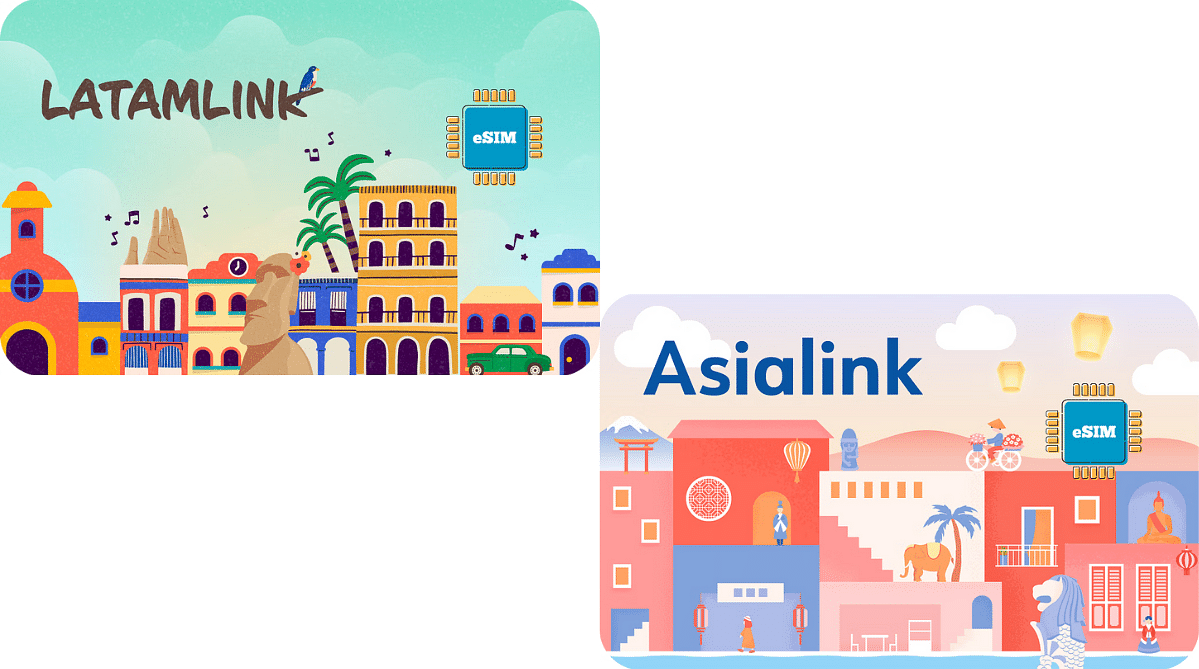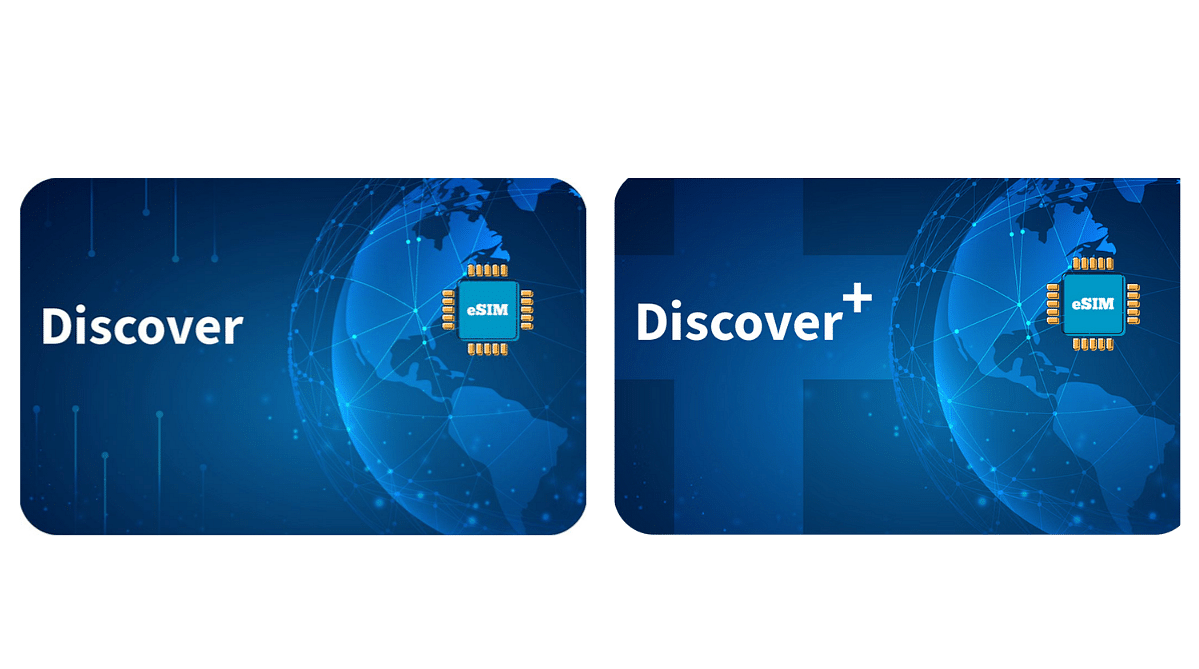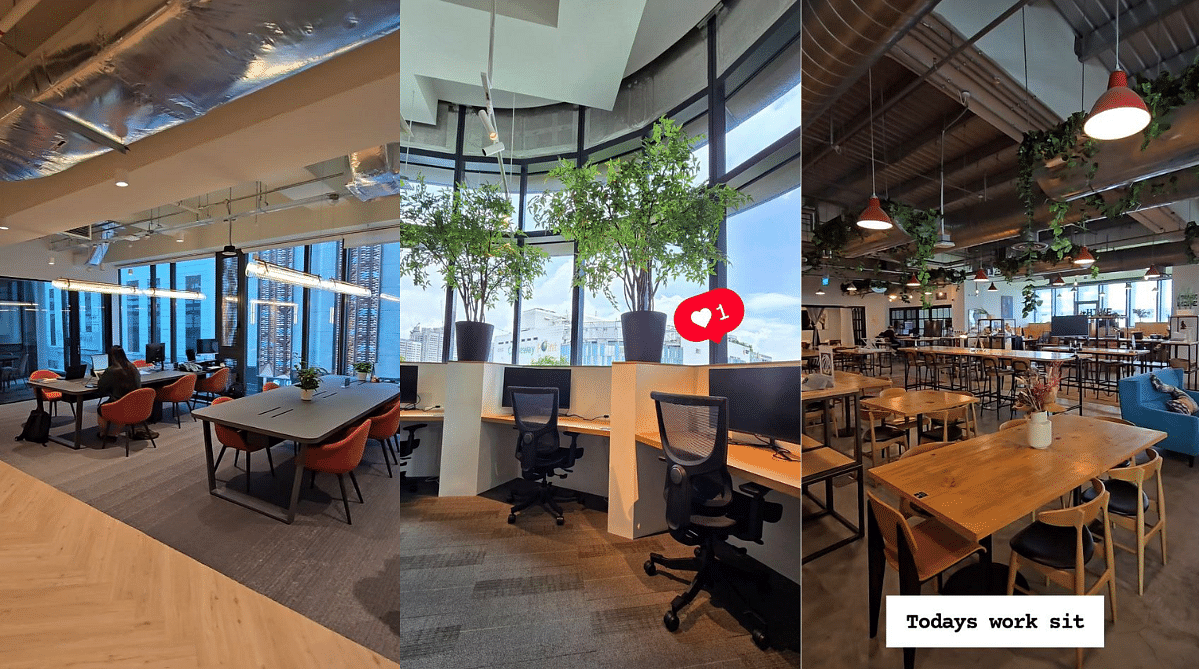
Table of Contents:
Finding reliable internet as a digital nomad isn’t just a nice-to-have—it’s non-negotiable.

Sunsets in Lençóis Maranhenses are just the best!
Whether I’m exploring the white sand dunes of Lençóis Maranhenses National Park or working from a café by the Mekong in Luang Prabang, staying connected has made or broken my ability to work and move freely.
The challenge isn’t just getting any Wi-Fi but finding connections that are fast, secure, and consistent enough to support real work, like video calls, uploads, or accessing cloud tools, without having to pray to the tech gods every 10 minutes.
After trial and error and a few panic-fueled SIM swaps in train stations, I’ve built a pretty good system for staying online anywhere.
In this guide, I’m breaking down the best mobile and on-the-go internet options for digital nomads, backed by personal experience and a healthy obsession with avoiding dropped Zoom calls.
From eSIMs and coworking spots to underrated gear hacks and honest security advice, this is the kind of info I wish I had when I first hit the road.
Let’s delve right in, shall we?
Why Reliable Internet Matters for Digital Nomads
Staying Productive and Professionally Connected

Ock Pop Tok Silk Road Café in Luang Prabang
As someone who’s worked everywhere from the bustle of Shanghai to a riverside café by the Mekong in Luang Prabang, I’ve learned the hard way that productivity isn’t just about discipline—it hinges on a stable internet connection.
Clients expect quick responses, meetings run on tight schedules, and cloud-based workflows don’t tolerate dropped connections.
Uploading large design files or collaborating in real-time across platforms like Notion and Figma, even a small Wi-Fi hiccup can derail an entire day’s progress. When your livelihood travels with you, a lagging signal isn’t just annoying—it’s professionally risky.
Avoiding Interruptions During Critical Tasks
There’s nothing quite like having your Wi-Fi freeze mid-presentation while trying to impress a new client, especially when you're calling from a connectivity-challenged country like China.
That kind of interruption not only kills momentum but can also chip away at your credibility. Video calls, project submissions, and even live editing sessions all depend on uninterrupted service.
Fluctuating speeds and unstable public networks turn simple tasks into stress tests. For those of us juggling time zones and deliverables, seamless connection isn’t a luxury; it’s a safeguard against costly missteps.
Navigating Life Admin On-the-Go (Flights, Booking, Banking, etc.)
Living abroad has taught me that remote work isn't just about work—it’s a constant dance of logistics.
Booking last-minute flights, confirming hotel reservations, handling banking issues, or simply ordering food can become near-impossible when the Wi-Fi stalls.
Imagine trying to update a visa form while the internet blinked in and out.
Secure and high-speed internet lets you take care of these essentials quickly, without exposing personal info on risky networks or losing access when you need it most.
Top Mobile and On-the-Go Internet Solutions
1. eSIMs: The Most Flexible Cross-Border Option
An eSIM is a built-in digital SIM that eliminates the need for a physical card, letting you activate data plans remotely and switch networks on the fly.
There’s no fumbling at airport kiosks or waiting in line just to stay connected. You scan a QR code, and boom—you’re online. It’s smooth, it's smart, and once you've tried it, you won’t want to go back to juggling tiny plastic cards.
Beyond convenience, eSIMs shine in performance and security. With no physical SIM to remove or clone, they significantly reduce the risk of theft or tampering.

The activation process is encrypted and locked to your device, giving you peace of mind when working with sensitive info or hopping onto public Wi-Fi.
Speeds? Let’s just say I’ve uploaded client videos faster over eSIMs than in many coworking spaces. The secret is that they often hook you up to top local carriers with strong 4G or 5G coverage.

Me and two new friends I met on top of Morro Dois Irmãos in Rio de Janeiro
And if you’re planning to explore a single country or city deeply, like I did in Rio de Janeiro, you can consider Airalo’s country eSIMs. They offer cost-effective options without sacrificing speed or reliability. It’s like having local knowledge built into your phone.
2. Pocket WiFi: Best for Multi-Device Connection
Pocket WiFi is a handy little device that connects to cellular networks and broadcasts your own private Wi-Fi hotspot.
Instead of draining your phone’s battery through tethering, this device shares a stable internet with all your gear.
Where Pocket WiFi really earns its keep is in group settings or gadget-heavy work routines. It handles multiple connections at once without throttling your speed. And while you do need to keep it charged and sometimes rent or buy the unit, it makes up for that with flexibility.
The setup is quick, and as long as there’s a cell signal, you’re in business.
3. Regional eSIMs: Affordable Internet Across Specific Zones
Regional eSIMs are designed for specific clusters of countries—think Asia, Europe, or the Middle East.
If you're planning a regional adventure, these are a no-brainer.

I remember being able to upload this picture of the Perito Moreno Glacier to my Instagram stories smoothly because I had a regional eSIM
When I spent weeks away on my Patagonia trip in South America, having a single Latin America eSIM that worked across multiple countries (Brazil, Argentina, and Chile) saved me time, hassle, and money. No new setups in each country, no guessing which provider has the best local deal.
The best part is, regional eSIMs still maintain top-tier security. Like their global counterparts, they don’t rely on a removable SIM card, so your risk of SIM swapping or card theft drops dramatically.
They’re fast too, often faster than global options because they prioritize regional networks with stronger local infrastructure.

I was using Airalo’s regional eSIM while traversing South America. They offer plans tailored to zones with good value and reliable coverage. They’re not flashy, but they work—and that’s what matters most when your next upload can’t wait.
4. Traditional SIMs: Local vs. International Plans
Traditional SIM cards have long been the go-to option for staying connected abroad, and in some cases, they still make sense.
SIM cards are often affordable and give you access to domestic data plans with decent speeds. For travelers staying put in one country for a while, this can be a practical and budget-friendly solution.
That said, traditional SIMs can come with a bit of friction. Swapping out physical cards, dealing with language barriers, and needing to unlock your phone can all add unnecessary complexity to your travel day.
In contrast, eSIMs remove nearly all of that hassle. With just a QR code, you’re connected in minutes—no store visits, no card swaps, and no fumbling around with tiny SIM trays in airport lounges.
While traditional SIMs still have their place, especially in regions with limited eSIM support, digital options are clearly setting a new standard for convenience and flexibility.
5. Global eSIMs: Seamless Connectivity Across Borders
Global eSIMs are digital SIM cards that give you data coverage in dozens—or even hundreds—of countries with a single plan. Think of it as your internet passport.
If, say, you were to use one during a cross-border stretch from Hong Kong into southern China, then onto Vietnam, you won’t need to pause to swap SIMs or hunt for a local shop.
Once installed, it runs quietly in the background, keeping you connected as you jump time zones or hop between cities. The flexibility to switch plans remotely or top up on the go can’t be overstated.
From a security standpoint, global eSIMs are tightly integrated with your device. Without a removable card to steal or duplicate, and with most providers encrypting traffic or offering add-on VPNs, your connection becomes far more trustworthy.

And they’re fast, often linking you to the strongest available network in any country. Speeds remain steady even during high-traffic hours, which is a big win when you’re dealing with cloud-based projects.
Airalo’s global eSIMs, for instance, let you explore regions effortlessly while staying online. They’re reliable, flexible, and just blend into your workflow like they were always there.
6. Coworking Spaces: Stability Meets Community
I recently left my job in January 2025 and have been going around Singapore working remotely for several freelance clients.

JustCo (left), N9 (middle), and The Hive (right) are just a few of the coworking spaces I’ve checked out in Singapore
Needless to say, the high-speed internet was non-negotiable. If you're juggling video calls, cloud-based collaboration, and a heavy workload, coworking spaces provide the most distraction-free environment with stable internet connections.
Most coworking networks invest in secure, enterprise-level internet infrastructure, so you're not at the mercy of unreliable guest networks.
Camped out in a well-equipped space in Beijing or tucked into a boutique setup in Bangkok, you’re still getting bandwidth built for business.
7. Colivings: Live, Work, Connect
Colivings mix accommodation, community, and workspaces into one setup, making them an excellent fit for digital nomads. With decent internet, flexible work areas, and a built-in social scene, they strike a nice balance between focus and connection.
That said, not all are created equal. Some lean more into comfort than connectivity, which can be a hassle if your work is bandwidth-heavy. A bit of research goes a long way—find the right spot, and it can feel like your home, office, and café all rolled into one.
8. Hostel and Hotel Wi-Fi
Hotels and hostels can be handy for short stays when you need a quick internet fix. I’ve uploaded files from sleek hotel rooms in Shanghai and barely managed emails on spotty hostel Wi-Fi in Luang Prabang. Speeds vary—some places offer solid connections, others slow to a crawl when crowded.
Security is a bigger concern. These networks are often open and shared, making your data vulnerable without encryption or regular password changes. I never access sensitive info without a VPN—it’s not being paranoid, just being smart on an open network.
9. Cafés and Restaurants: When Ambience Meets Accessibility
Many digital nomads turn to cafés or restaurants for their casual convenience and easy access, especially when coworking spaces are far or accommodations lack proper internet. For quick tasks and low-stakes browsing, they often do the trick.
However, public Wi-Fi in these spaces comes with serious security gaps. According to Cybersecurity Ventures, 36% of all security breaches begin with phishing attacks, many of which are launched via unsecured or poorly protected networks like those in cafés and restaurants.
These environments are especially vulnerable to man-in-the-middle attacks and rogue hotspots set up to mimic legitimate ones.
If you’re connecting without a VPN, your login credentials, financial data, or sensitive work files could be intercepted without you even knowing.
The convenience of free Wi-Fi can easily lead to costly compromises, which is why I always limit my café sessions to surface-level browsing or creative tasks—nothing that requires accessing sensitive accounts or client files.
Final Thoughts From the Road (or That One Hill Town in Brazil)

The hill town of Ouro Preto in Eastern Brazil
After having navigated dodgy signals in Amazonian cabins, hill towns, and long-haul sleeper trains, one thing’s clear: internet isn’t a luxury for digital nomads—it’s your lifeline.
From coliving spaces to cafés, pocket WiFi to coworking hubs, each option in this guide offers its own strengths depending on your destination, workflow, and budget.
But when it comes to flexibility, speed, and setup that doesn’t involve SIM card surgery in a bus terminal, eSIMs have been the most consistently reliable tool in my arsenal.
Of all the options, Airalo’s eSIMs—especially their regional and global plans—stand out for striking that perfect balance between ease, performance, and wide coverage.
Whether you’re deep in a remote region or just trying to avoid another sketchy café login page, having a high-performing eSIM like Airalo in your pocket keeps your work flowing and your travel stress-free. Stay curious, stay safe, and stay connected.




